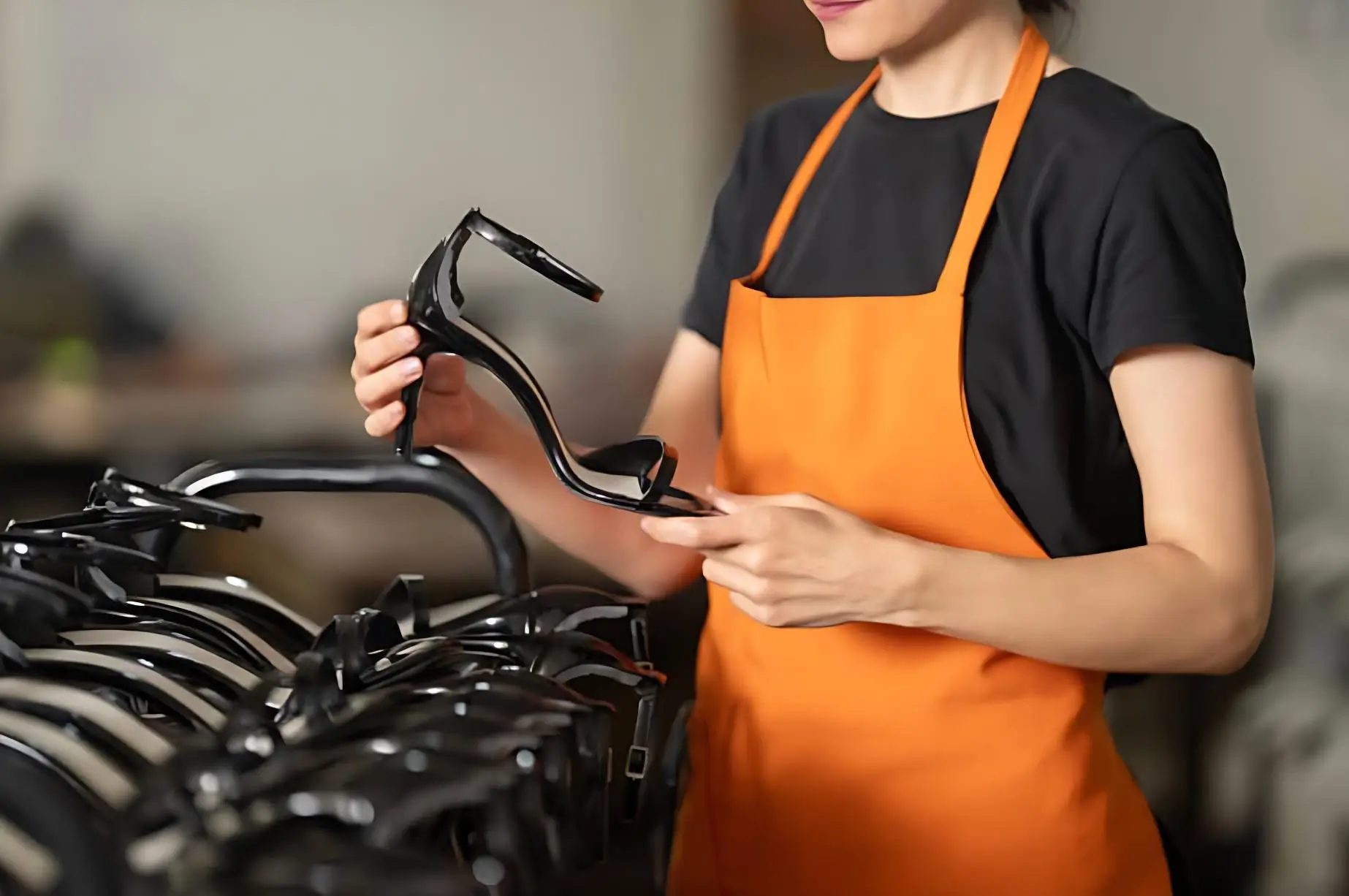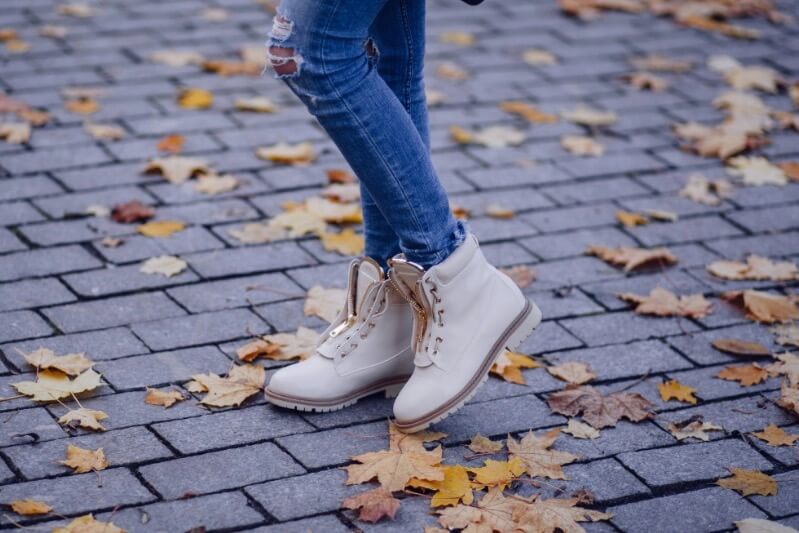The market for outdoor gear is growing fast. Your customers want excellent products for hiking in wet weather. This report shows you what to look for in modern hiking footwear. It uses information from new 2025 durability tests and technologies.
Good hiking shoes for 2025 need a few key things. They must have great waterproofing and superior grip on slippery surfaces. They also need to dry quickly. And they must be very durable to handle damage from water, rocks, and mud.
This report will talk about important new features. These include PFAS-free waterproof liners like ePE and special outsoles with advanced rubber like Vibram MegaGrip. We will also look at new construction methods like the Direct Injection Process (DIP). These methods make shoes more water-resistant and last longer.
Different hikers have different needs. A day hiker wants a light and fast shoe. A thru-hiker needs a shoe that is extremely durable and dries very fast. Future innovations will include smart fabrics and materials that can even dry themselves.
Wet Terrain Challenges & User Demands
Wet ground presents many problems for hikers. These problems include muddy trails, stream crossings, and slick rocks or roots. Each type of terrain puts different stress on a shoe. You need to offer different shoes for different customer profiles.
Day Hiker: This customer wants a shoe that is lightweight, comfortable, and has good grip. They like waterproof shoes but also really value a shoe that can dry quickly after getting a little wet.
Multi-Day Backpacker: This hiker has a heavier pack that they’re carrying for long distances. They need a shoe that has additional support, stability with durability to gain long-lasting performance. The reliable waterproofing is essential for comfort and safety; this cannot be overstated.
Thru-Hiker: This is a person that walks for an extended period of time (weeks or months) and wants to continue walking from the moment they leave the trailhead. They need an extremely durable shoe that is also light. Rapid drying is often more important to them than total waterproofness. Their shoes also need to be roomy to fit feet that swell.
2025 Footwear Landscape: Categories & Technologies
In 2025, you will see three main types of hiking shoes in the market. These are Traditional Hiking Boots, Trail Running Shoes, and Hybrid Designs. New materials and technologies are making all three categories better.
Emerging Materials & Technologies:
New Waterproof Liners Without Harmful Chemicals: The industry is moving away from old waterproof materials that use PFAS chemicals. Now, brands are using new PFAS-free options. These include ePE (used in new Gore-Tex products), electrospun nanofibers (like Polartec NeoShell), and bio-based membranes (like eVent BIO™). These materials block water but still let sweat escape.
New Rubber and Tread Designs for Better Grip: Grip is critical on wet trails. Manufacturers are creating outsoles with advanced rubber compounds. Examples include Vibram MegaGrip, Continental rubber, and graphene-infused rubber. These materials stick to wet surfaces much better. The lug patterns (the treads) are also inspired by nature to provide the best traction in mud or on slick rock.
Stronger Ways to Build Shoes: The way a shoe is put together affects its durability. The Direct Injection Process (DIP) is a new method that molds the sole directly to the upper. This creates a stronger, waterproof bond without weak glue spots. Other methods include seamless welding and using water-repellent materials throughout the shoe.
Sustainability in Production: Customers now care about how products are made. Successful brands will use sustainable materials. This includes using recycled fabrics, PFAS-free chemicals, and making sure factory workers are treated fairly.
2025 Durability Testing Protocol
Modern durability testing is very advanced. It allows brands to prove their products are tough. This process uses advanced technology to see how shoes perform in wet conditions.
Labs test all the materials before the shoe is even made. Then, they use robotic foot simulators to mimic a person walking for hundreds of miles. These robots walk through simulated mud, streams, and constant rain. Special sensors measure if any water gets in and where the shoe is under the most stress. This data helps companies build a much better, longer-lasting shoe.
Critical Durability Metrics & Failure Modes
Testing focuses on a few key areas to see if a shoe is durable. It checks if the sole will separate from the shoe after getting wet many times. It tests if the waterproof liner will tear or get holes. It also checks the strength of the seams and if the metal hardware will rust.
Common problems with shoes in wet weather include:
The sole pulling away from the shoe because water breaks down the glue.
The waterproof liner gets a hole from rocks or sticks.
The fabric on the upper part of the shoe wears out.
Water leaking through the seams.
Good manufacturers prevent these problems. They use stronger, water-resistant glues and add extra protection around the waterproof liner. They also use tough, water-repellent fabrics for the upper part of the shoe.
Holistic Performance Evaluation
A great hiking shoe is more than just durable. A full evaluation looks at the whole picture.
Grip Efficacy: The shoe must have excellent traction. This comes from using soft, sticky rubber compounds and the right lug pattern for different terrains.
Drying Time: How fast a shoe dries is very important. This depends on the materials and if the shoe has drainage ports to let water out.
Overall Comfort: A comfortable shoe prevents blisters. Good fit, proper socks, and temperature regulation are key to comfort.
Weight: Lighter shoes are very popular. But brands must balance low weight with good durability. A shoe that is too light might not last very long.
Comparative Analysis & 2025 Recommendations
| Feature / Category | Traditional Hiking Boots | Trail Running Shoes | Hybrid Designs |
|---|---|---|---|
| Durability | High | Moderate | Moderate-High |
| Waterproofness | High | Variable | High (with drainage) |
| Breathability | Moderate | High | Moderate-High |
| Grip (Wet) | High | High | Excellent |
| Drying Time | Slow | Fast | Very Fast |
| Ankle Support | High | Low-Moderate | Low-Moderate |
| Weight | Heavy | Light | Light-Moderate |
| Typical User | Multi-day, rugged | Day, thru-hikers | Water sports, swampy |
2025 Recommendations:
For Day Hikers: Offer them a lightweight trail runner or a low-cut shoe. It should have a new PFAS-free liner and an outsole like Vibram Megagrip or Continental Rubber for great grip.
For Multi-Day Backpackers: They need a mid-to-high ankle boot. Look for models built with the DIP construction method and deep (5mm+) lugs for stability. These shoes should use advanced, durable waterproof liners.
For Thru-Hikers: They should get lightweight trail runners with very breathable uppers and drainage ports. An outsole with graphene-infused or Butyl rubber will give them the best wet-weather grip, even if it wears down a bit faster.
For Specific Challenges:
Muddy Trails: Shoes need deep, widely spaced lugs that clean themselves out.
Slick Rocks/Roots: Shoes need softer rubber and shallow, multi-directional lugs for more surface contact.
Bog/Marshland: Shoes need to be taller and made from materials that resist rotting.
General Recommendation: Advise all your customers to pair their shoes with Merino wool or synthetic blend socks. Good socks are essential to manage moisture and prevent blisters.
Frequently Asked Questions
1. What is the most important feature to look for in a hiking shoe for wet terrain?
While waterproofing is important, the single most critical feature is the outsole’s grip. A shoe with a high-performance rubber compound (like Vibram MegaGrip) and a well-designed lug pattern will provide the best traction on slick rocks and muddy trails, which is essential for safety and confidence in wet conditions.
2. What is the difference between a waterproof shoe and a quick-drying shoe, and which is better?
A waterproof shoe uses a membrane (like Gore-Tex) to block water from getting in, but it can be less breathable and slow to dry if water does get over the top. A quick-drying shoe (often preferred by thru-hikers) doesn’t have a waterproof membrane, so it gets wet easily but also dries very quickly. The “better” option depends on the user. For multi-day backpackers in consistently wet conditions, reliable waterproofing is often preferred. For those who will be crossing streams, quick-drying might be a better choice.
3. What are PFAS-free membranes, and why are they important?
PFAS are “forever chemicals” that have traditionally been used in waterproof membranes. They are very effective, but they are also harmful to the environment. PFAS-free membranes are a new generation of waterproof, breathable materials (like ePE) that offer excellent performance without the negative environmental impact. For brands focused on sustainability, choosing a manufacturer that can work with these new materials is a key consideration.
Final Thoughts: Where Innovation Meets the Trail
As we’ve explored, creating the perfect hiking shoe for wet terrain is a complex science. It’s a balance of innovative materials like PFAS-free membranes, advanced construction methods like the Direct Injection Process, and a relentless obsession with quality and durability. Success isn’t just about a good design; it’s about finding a manufacturing partner who has truly mastered the technical process.
At Jinhua Shoes, this is our entire philosophy. Since 2004, from our home in Wenzhou, China’s shoe capital, we’ve been the trusted OEM & ODM engine behind leading performance and outdoor brands across five continents. We combine our deep understanding of the manufacturing process with a passion for innovation, helping you turn your vision into a world-class product that stands up to the toughest conditions.
If you’re ready to build a hiking shoe that delivers on its promises, we’re ready to listen.
Got a project in mind? Let’s turn it into reality. Send your project details to our expert team by email to start the conversation.
📧 Email: sales@jinhuashoes.com
(You’ll get personalized expert feedback within 12 hours.)



